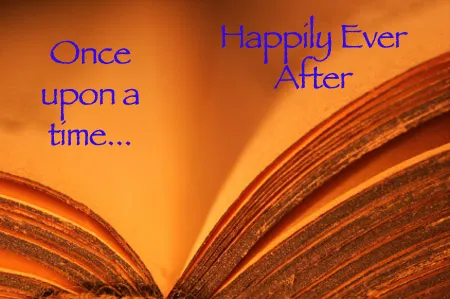One of the best ways to learn about life is to study stories. Reading fiction, devouring biographies, and immersing myself in movies has taught me so much. But to mine wisdom from stories, we must discriminate between true and false, feel our emotions, and understand roles.
Story writing mirrors what goes on within our minds during the creative process. The True Self is the father and the physical world is the mother; the child is our story (the effect). In order to have interesting stories, it’s necessary to go beyond the purely win-win nature of the True Self. The mother does this by dividing thought without judgment (called first-cause creation or wisdom). Second-cause creation happens when a false masculine role divides thoughts in a judgmental way — win/lose, good/evil, etc. This is referred to as knowledge. A perfectly crafted story starts in the True Self, filters through the knowledgeable false self, and emerges into the physical world.
Desire
A story falls flat if the protagonist doesn’t want anything. Some protagonists have a True Self desire like finding unconditional love, peace of mind, or freedom. But other protagonists have desires such as serving their country, revenge, or getting rich. These are stories without an exit from the illusion. However, occasionally what looks like a false outer desire is actually a metaphor for the part of the person’s True Self (inner desire) that they think they’ve lost. Ancient stories are nearly always this way, and companies like Disney are masters of this formula.
If we have a strong desire, we contain the necessary feminine wisdom within to fulfill that desire (alchemical marriage). But often, we look to masculine knowledge/beliefs for the answer (labeled as two men sleeping together in the ancient world). Desire and fulfillment are side-by-side until we introduce beliefs/knowledge.
Beliefs
A great story is a dance between unrelenting desire and the obstacles that keep it from being fulfilled. Beliefs give birth to obstacles. The more beliefs we have, the more obstacles between us and our desire. It’s a simple formula. But if the obstacles are too complex, we’ll give up. The ultimate giving up is dying.
One could make a strong case that the purpose of life is to be dropped into a physically oriented world where everyone wants us to play a part in an unsatisfying collective production instead of playing the lead role in our own production. Following authority figures and accepting their beliefs casts us into a role in the collective story; it keeps us from living our story. Until we wake up…
First Act
Our unrelenting desire is formed early in our story. Something in life goes off track, or we accept a big belief system; now we have a desire to get back to our True Self. This is called the inciting incident. We might have a huge life-changing loss, or we might have a slow deterioration of our desire until it appears unattainable. When the desire has lost it’s spark, we’ve abandoned our personal story. We’re lost in the illusory maze.
Once we write off our desire, our story changes from an interesting screenplay with a strong theme to a long, dull ridiculously dramatic soap opera. That’s the illusion. We go from drama to drama without any real conclusion. Drama can even become addictive since it relieves boredom; and the illusion is very slow and boring.
Second Act
In the second act, we meet obstacles created by the beliefs we accepted from authority. We thought the illusion was going to be fun; it’s actually filled with problems and suffering. Our false self was meant to be a creative container, but now it’s filled with knowledge and beliefs. We fit it and even accept what is… UNTIL… we come to a cliff, and our enemy is right behind us — we must j-u-m-p. We must let go in order to live; part of our false self must die in order for our body to continue to live. This is often the theme of a great exit story. Death or facing death forces us to let go.
If we won’t drop our beliefs, we’ve got a serious story problem. We’re stuck in the second act. We’re seeking, which is trying to find something within the illusion that only exists outside of the illusion. Sound familiar? We’ll try to change the illusion’s story to something nicer or create false exit doors. But, only the author of the story can change it; they have the masculine role. We might even pretend to be satisfied, but we aren’t; acceptance is often apathy in disguise.
Take the Jesus story. Christians massacred the real ending, which was that we all find the Christ (True Self) within; and they changed it to Jesus returning. But he never does. Even if he did, they’d kill him because they hate the True Self. Jesus, to a Christian would look like the part of themselves that they view as evil — the part that won’t obey their rules. The people who read my blog have often played the role of Jesus to a believer; and the believer crucified them.
Third Act
As we move toward our True Self by letting go, we gain the masculine role in our lives. We realize that all the characters in our life are actually in our OWN mind. We must ask: Which characters advance our story? Which ones are nothing but an obstacle? The obstacles have to lose their false power (become supporting cast) or leave the story.
Imagine that you’re a really lost character. You might invent a wise helper character to play with, like Merlin to Arthur. Or you could create a transformative experience, like Buddha. Or you could find the mysterious blog that shows you how to let go of your beliefs and unlock your desires. You see if you’re here, you’re working on that third act; and now you have the tools to create a great ending — a real, eternal happily ever after.


